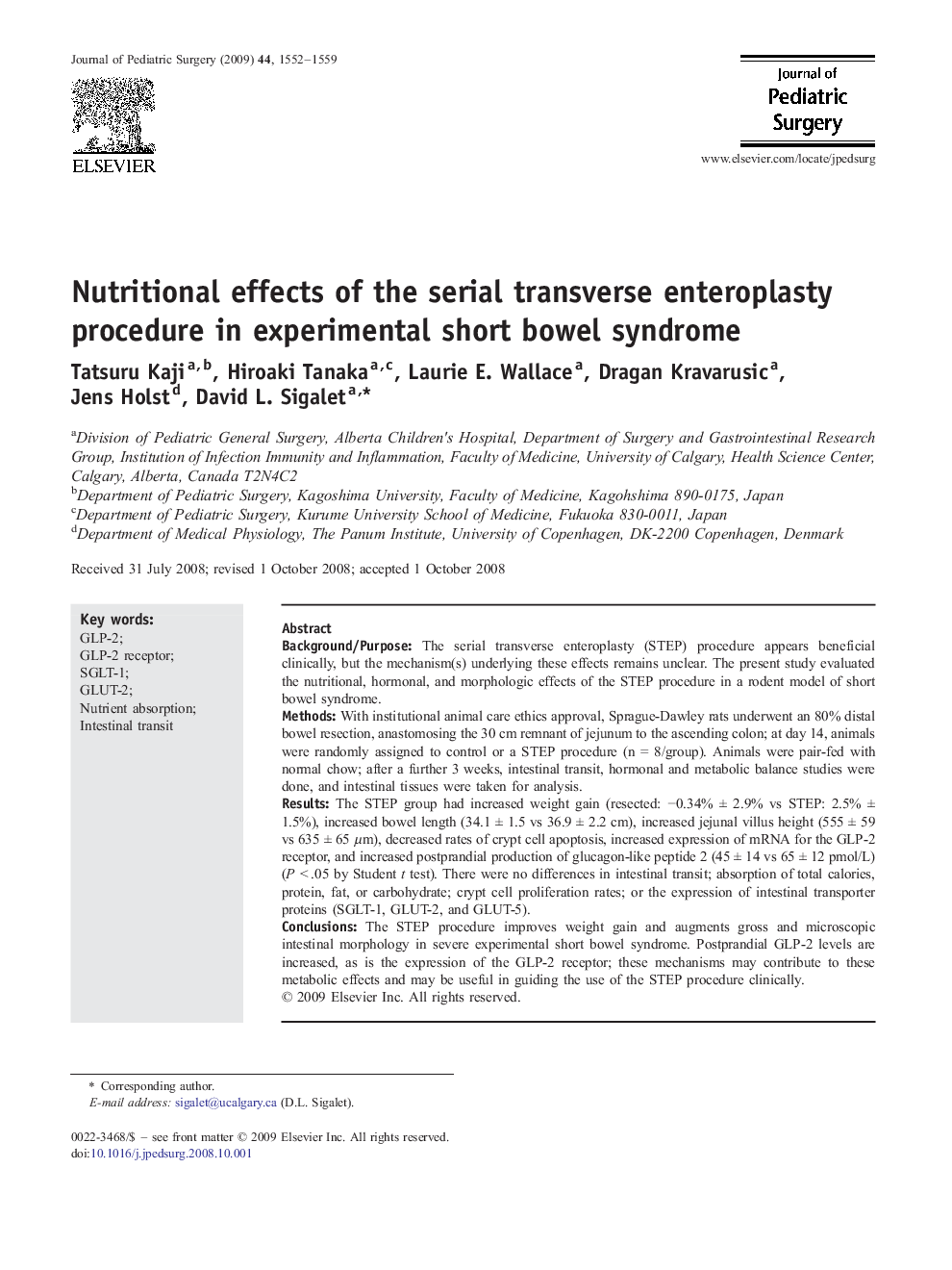| Article ID | Journal | Published Year | Pages | File Type |
|---|---|---|---|---|
| 4158190 | Journal of Pediatric Surgery | 2009 | 8 Pages |
Background/PurposeThe serial transverse enteroplasty (STEP) procedure appears beneficial clinically, but the mechanism(s) underlying these effects remains unclear. The present study evaluated the nutritional, hormonal, and morphologic effects of the STEP procedure in a rodent model of short bowel syndrome.MethodsWith institutional animal care ethics approval, Sprague-Dawley rats underwent an 80% distal bowel resection, anastomosing the 30 cm remnant of jejunum to the ascending colon; at day 14, animals were randomly assigned to control or a STEP procedure (n = 8/group). Animals were pair-fed with normal chow; after a further 3 weeks, intestinal transit, hormonal and metabolic balance studies were done, and intestinal tissues were taken for analysis.ResultsThe STEP group had increased weight gain (resected: −0.34% ± 2.9% vs STEP: 2.5% ± 1.5%), increased bowel length (34.1 ± 1.5 vs 36.9 ± 2.2 cm), increased jejunal villus height (555 ± 59 vs 635 ± 65 μm), decreased rates of crypt cell apoptosis, increased expression of mRNA for the GLP-2 receptor, and increased postprandial production of glucagon-like peptide 2 (45 ± 14 vs 65 ± 12 pmol/L) (P < .05 by Student t test). There were no differences in intestinal transit; absorption of total calories, protein, fat, or carbohydrate; crypt cell proliferation rates; or the expression of intestinal transporter proteins (SGLT-1, GLUT-2, and GLUT-5).ConclusionsThe STEP procedure improves weight gain and augments gross and microscopic intestinal morphology in severe experimental short bowel syndrome. Postprandial GLP-2 levels are increased, as is the expression of the GLP-2 receptor; these mechanisms may contribute to these metabolic effects and may be useful in guiding the use of the STEP procedure clinically.
